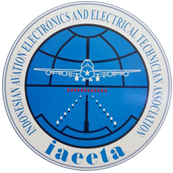A Triple Helix Scheme Approach: The Development of Aviation Human Resources from Perspectives of Academician, Businessmen, and Government
DOI:
https://doi.org/10.52989/jaet.v3i1.73Keywords:
aviation human resource, aviation technology, collaboration, link and match, triple helix schemeAbstract
This research aims to explore the perspectives among aviation stakeholders on aviation human resources development in the triple helix scheme. How the academician, businessmen, and government thought on the produces the human resources that qualify with their needs is investigated. A qualitative method was implemented to elaborate this research both data collection and analyses. A depth interview was conducted with informants from the three parties. After that, a focus group discussion among them to crosscheck and validated the interview was realized. The result showed that the academic perspective builds the model which seems near to a laissez-faire configuration. On the other perspective the industry, offer different model among them. Airnav Indonesia could be part of laissez-faire configuration. Garuda Maintenance Facility (GMF) Aeroasia model seems exactly like the third configuration. Batam Aero Technic (BAT) follows the first configuration. The government perspective offers an Indonesia Directorate General of Civil Aviation (DGCA) collaboration model. It seemed like the statist configuration. Academicians, businessmen, and Government in the triple helix scheme have similar preparation to face the aviation technology development in the future. They anticipated the challenge by preparing the human resources competencies. On the other hand, academician is preparing new major in the field of air navigation and unmanned aircraft.
Downloads
Downloads
Published
How to Cite
Issue
Section
License
Copyright (c) 2022 Oke Hendra, Benny Kurnianto, Ika Endrawijaya, RINI SADIATMI

This work is licensed under a Creative Commons Attribution-NonCommercial 4.0 International License.












_1.png)




